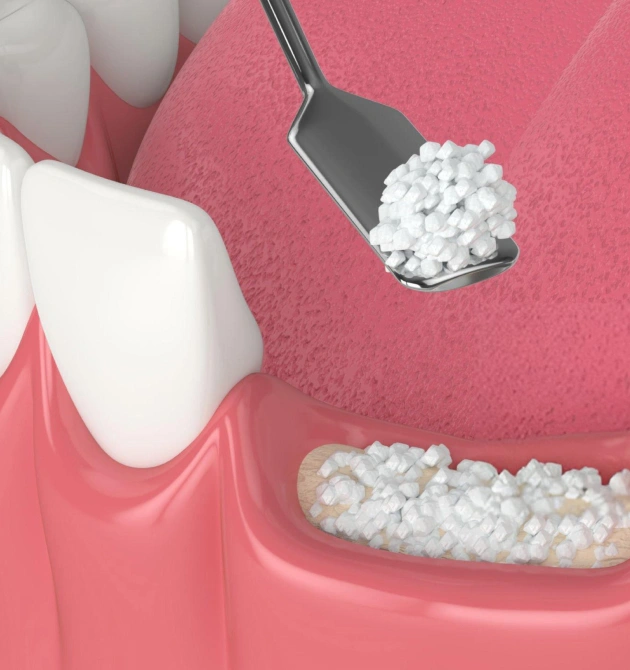
An Overview of Bone Grafting
Over time, the jawbone that supports missing teeth can undergo atrophy and be reabsorbed, leading to a decrease in both the quality and quantity of bone available for dental implant placement. As a result, many patients may find themselves ineligible for dental implants due to insufficient bone structure.
Bone grafting offers a solution by allowing for the replacement of missing bone and encouraging new bone growth in the affected area. This procedure not only facilitates the successful placement of implants with the necessary length and width but also plays a crucial role in restoring both functionality and aesthetic appearance.
By rebuilding the bone, patients can regain the structural integrity of their jaw, which enhances their ability to chew and speak effectively. Additionally, bone grafting helps restore the natural contour of the face, contributing to an overall youthful appearance. This means that not only will you be able to enjoy the benefits of dental implants, but you will also improve your overall oral health and confidence. Through bone grafting, we can pave the way for a successful implant procedure and a beautiful, functional smile.
Different Types of Bone Grafts
Autogenous Bone Grafts:
Autogenous bone grafts, or autografts, are sourced from your own bone, usually taken from areas such as the chin, jaw, lower leg, hip, or skull. One of the primary benefits of autogenous grafts is that they consist of living bone, which contains cellular components that promote natural bone growth.
However, a notable drawback is that harvesting an autograft necessitates a second surgical procedure to collect bone from another part of the body. Depending on your specific condition, this additional surgery may not be advisable.
Allogenic Bone:
Xenogenic Bone Grafts:
Xenogenic bone is sourced from the non-living bone of another species, typically cows. This bone is processed at high temperatures to eliminate the risks of immune rejection and contamination. Similar to allogenic grafts, xenogenic grafts provide a scaffold for surrounding bone to grow into and fill any voids.
Both allogenic and xenogenic grafts have the advantage of not requiring a second surgical procedure to harvest your own bone, unlike autografts. However, because these options do not possess the bone-forming capabilities of autografts, bone regeneration may take longer and yield less predictable results.
